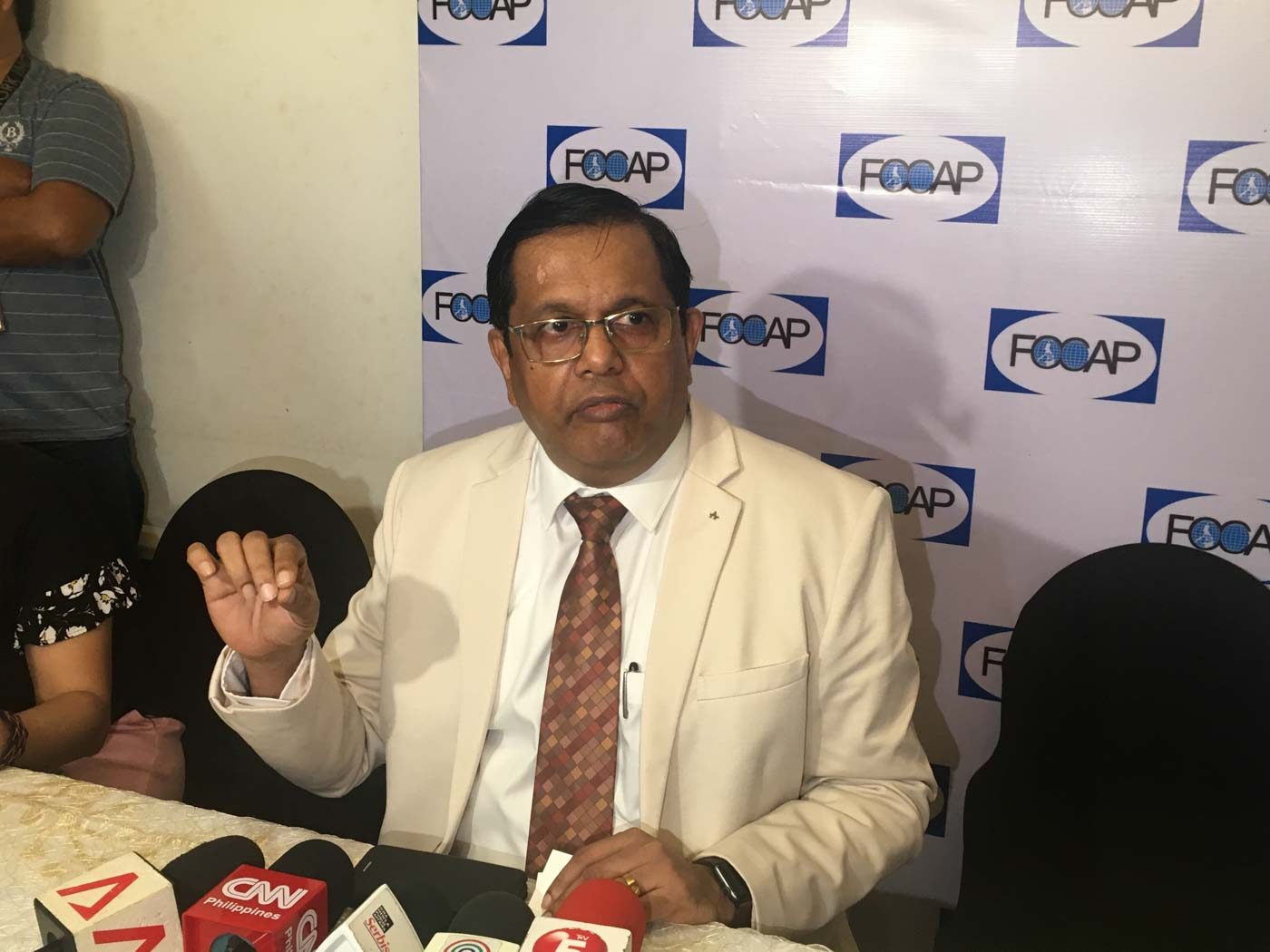SUMMARY
This is AI generated summarization, which may have errors. For context, always refer to the full article.

MANILA, Philippines – An epidemic and possible crisis calls for all hands on deck.
Local and international health organizations called on the media, families, and institutional leaders to participate in the planning of immunizing the country from polio and other threats of disease outbreaks during a press forum Wednesday, September 25, at the Luneta Hotel.
Experts from the World Health Organization (WHO), the Philippine Pediatric Society (PPS), and the Philippine Medical Association spoke with a united front about the possible health crisis.
The campaign needed not only included the planning processes, but also the battle against disinformation and misconceptions about vaccination safety.
WHO representative Rabindra Abeyasinghe said a 66% polio vaccination coverage in 2018 in the Philippines means 1 Filipino child out 3 is without the needed vaccine.
Urgency
The panel reiterated that the vaccination coverage rate must be pulled up to 95% in order to protect the country from polio and further outbreaks.
The Department of Health (DOH) told Rappler that the government was still reeling from vaccine hesitancy caused by the Dengvaxia controversy in 2017. (READ: ‘Polio vaccine is very safe,’ DOH reminds public amid epidemic)
WHO said that it was not only the Dengvaxia issue that contributed to the low rate. The vaccination coverage for polio was already inadequate before the controversy, and so the Philippines had been in high risk for a while now.
PPS President Salvacion Gatchalian raised the reactionary immunization culture present in some communities.
“Parents only realize that they need to get their children vaccinated when the outbreak is already there,” she said.
Abeyasinghe also said that supply management of vaccines was not enough, and that planning should also be well-executed.
This not only included government planning, but also decision-making and influence on the part of families and religious leaders because “we need to have one message,” said Abeyasinghe.
PPS Immunization Committee head chair Fatima Gimenez emphasized the need to battle disinformation and misconceptions about vaccine safety.
“Let’s keep our eye on the ball. We are under threat. We need to work together. Now is not the time to blame others. Each and every one of us has a role to play,” said Gimenez.
Gatchalian said that health organizations are meeting Thursday, September 26, to further discuss how the private sector can help plan the adequate immunization of communities.
Clarifications on polio presence
Abeyasinghe clarified details about the polio epidemic or outbreak in the country, saying that the viruses found in the children in Lanao del Sur and Laguna were of type 2 vaccine-derived poliovirus. (EXPLAINER: What is polio?)
The Philippines’ polio-free certification was based on the country’s eradication of wild poliovirus. The last case of wild polio was recorded in 1993.
After wild poliovirus type 2 was declared eradicated in 2015, all distributed polio vaccines from then on were only bivalent oral polio vaccine (OVP), meaning they were only preventive for types 1 and 3.
The children contracted polio from the OVP, because it no longer protected from type 2. – Rappler.com
Add a comment
How does this make you feel?
There are no comments yet. Add your comment to start the conversation.